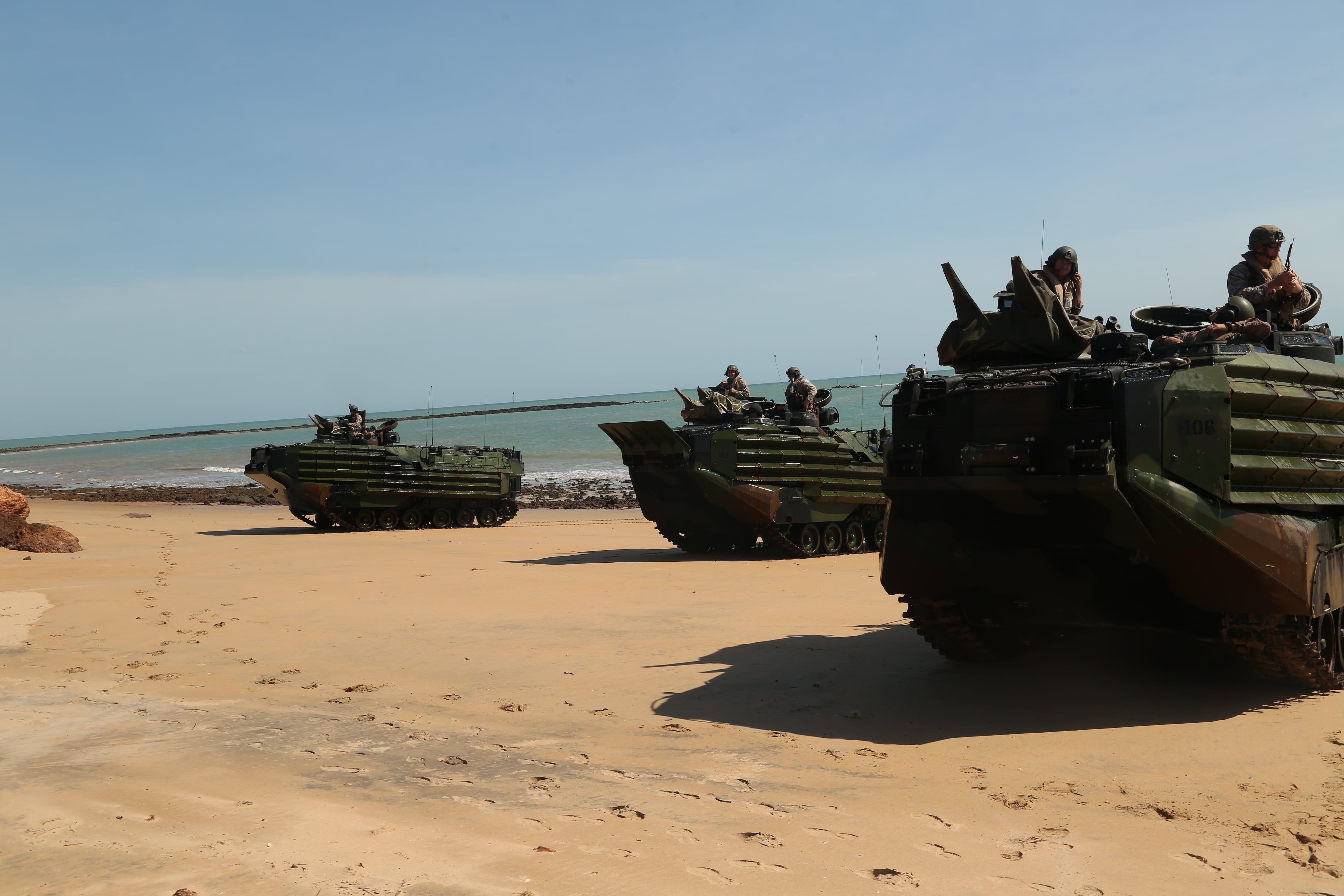The Marine Corps is moving fast, but not fast enough to modernize for a potential future war against China, the new deputy commandant for combat development and integration said Wednesday.
The Corps has taken the lead in the Department of Defense in its preparation for a war in the Pacific, with its Force Design 2030 plan released shortly after Gen. David Berger took over as commandant of the Marine Corps in summer 2019.
“If anybody thinks we are moving fast enough, you’re crazy,” Lt. Gen. Karsten Heckl said Wednesday at the Marine Corps’ western seaboard West Conference.
“I would say we need to double down our efforts and figure out a way to move quicker,” Heckl said.
RELATED

The commandant’s plan sees the Marine Corps getting smaller, lighter and more mobile in order to conduct a distributed fight in the Pacific, with the focus shifting toward how the Marine Corps can support a naval campaign in the region.
Small teams of Marines potentially armed with ship sinking missiles will take up small outposts throughout the Pacific.
The small size will ideally keep them hidden from enemy forces. If the Marines are detected, the increased maneuverability will ideally allow them to leave a position before it is targeted by the potential enemy.
The Marine Corps already has created units that are experimenting with the new formations Marine leaders believe are needed to fight in this way.
“My commandant has stepped off at speed,” Heckl said Wednesday. “We are moving very, very quickly and I assure you there will be no let up on the accelerator.”
In August 2021 the Marine Corps launched a Naval strike missile at U.S. Navy hull, and plans on spending the next two years allowing the 11th Marine Regiment to experiment with the missile and the best way to incorporate it into the fleet.
In the meantime, the Corps recently added a second battery of High Mobility Artillery Rocket Systems, or HIMARS, battery to the Okinawa, Japan, based 3rd Battalion, 12th Marines ― doubling the number of Marine rockets deployed in Asia.
Heckl said he wants industry to give the Corps more products to the fleet in order to start testing them.
“What I’m looking for is getting certain different capabilities in the hands of the operators and letting them begin to experiment,” Heckl said.
Heckl added that continuing resolutions risk slowing down the progress the Marine Corps is making.
“We want to not break trust with our families, our sailors, our Marines; we want to maintain that competitive edge for our strategic rivals; and we want to be a good partner to our industrial base. A year-long CR does not do any of those things, so it’s not in our best interest,” Rear Adm. John Gumbleton, the deputy assistant secretary of the Navy for budget, told reporters in a Jan. 25.
The government has been operating on a series of continuing resolutions, which freeze government speeding at the fiscal year 2021 levels since the new fiscal year started in October.
The current continuing resolution would fund the government through March 11.
“We need stable, predictable funding,” Heckl said.
The general went on to voice his concerns that military development tends to lead to over engineering at the cost of developmental speed.
“If we continue to overengineer, over cost everything and over schedule everything the Chinese are just going to get farther and farther and farther ahead,” Heckl said.




